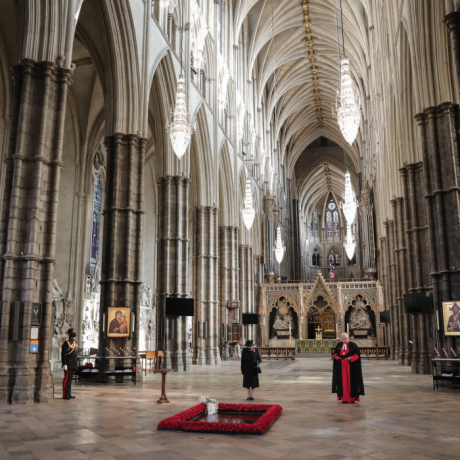The centenary of the grave of the Unknown Warrior
The Queen mark the centenary of the burial of the Unknown Warrior at Westminster Abbey this week, in a personal tribute ahead of Remembrance Sunday.
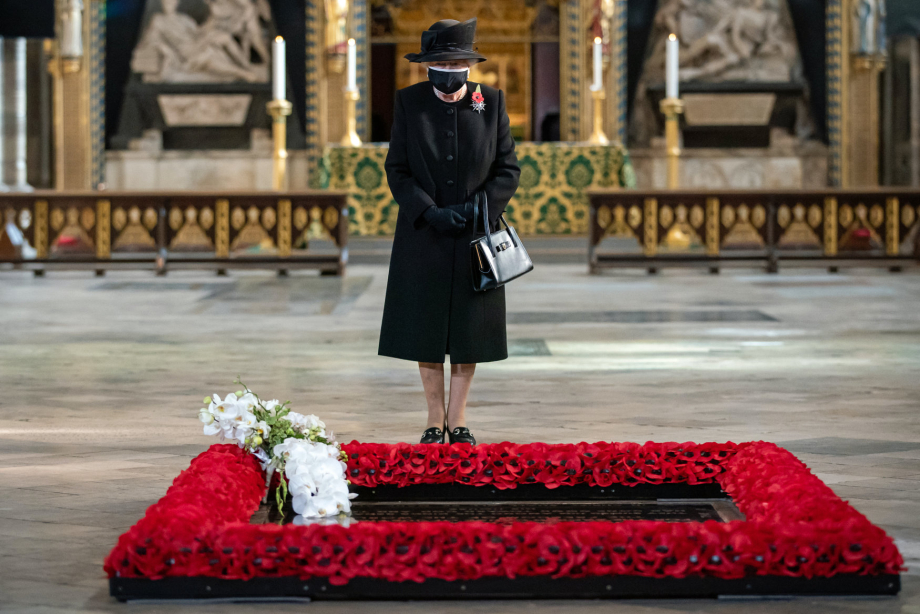
In a small private ceremony The Queen honoured the Unknown Warrior and the Royal Family's own associations with the First World War and the grave. As part of the ceremony, a bouquet of flowers featuring orchids and myrtle - based on Her Majesty's own wedding bouquet in 1947 - was placed on the grave of the Unknown Warrior in an act of remembrance. The gesture reflected the custom of Royal bridal bouquets being placed on the grave. Her Majesty also joined the Dean of Westminster in prayers and a moment of reflection, before The Queen's Piper played a lament, The Flowers of the Forest.
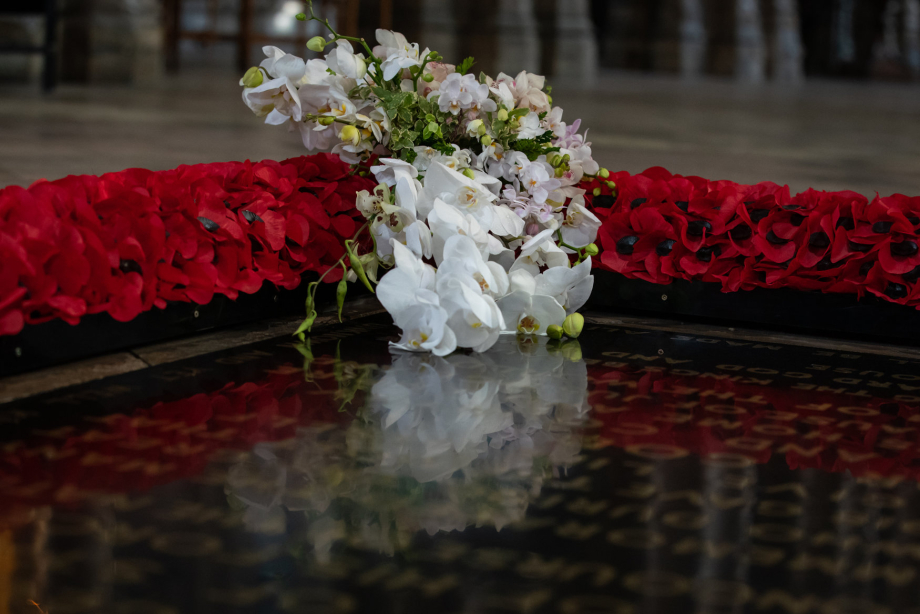
The idea to bury an unknown soldier in a place usually reserved for Royalty and notables came from a chaplain on the frontlines, the Reverend David Railton. In 1916, Revd. Railton noticed a grave in a garden at Armentières, which was marked with the words "An Unknown British Soldier". In August 1920, he wrote to the Dean of Westminster, Herbert Ryle, to ask whether it might be possible to bury an unknown soldier in the Abbey to represent those who could not be put to rest by their families.
“They have all grasped something of the true meaning. Those whose loved ones were amongst the ‘unknown’ know that in this Tomb there may be – there is – resting the body of their beloved.”
Excerpt from: The Origin of the Unknown Warrior’s grave by Revd. David Railton.
The Choosing of the Soldier
On 7th November 1920, four bodies covered in a union jack were brought into the chapel at St Pol from four different battle areas – the Aisne, the Somme, Arras and Ypres. The commander of British troops in France and Flanders, Brigadier General L Wyatt, chose the warrior and the remaining three were reburied in St Pol. The Unknown Warrior then made its way to London, where crowds lined the streets in silence as the coffin was pulled by horse and carriage.
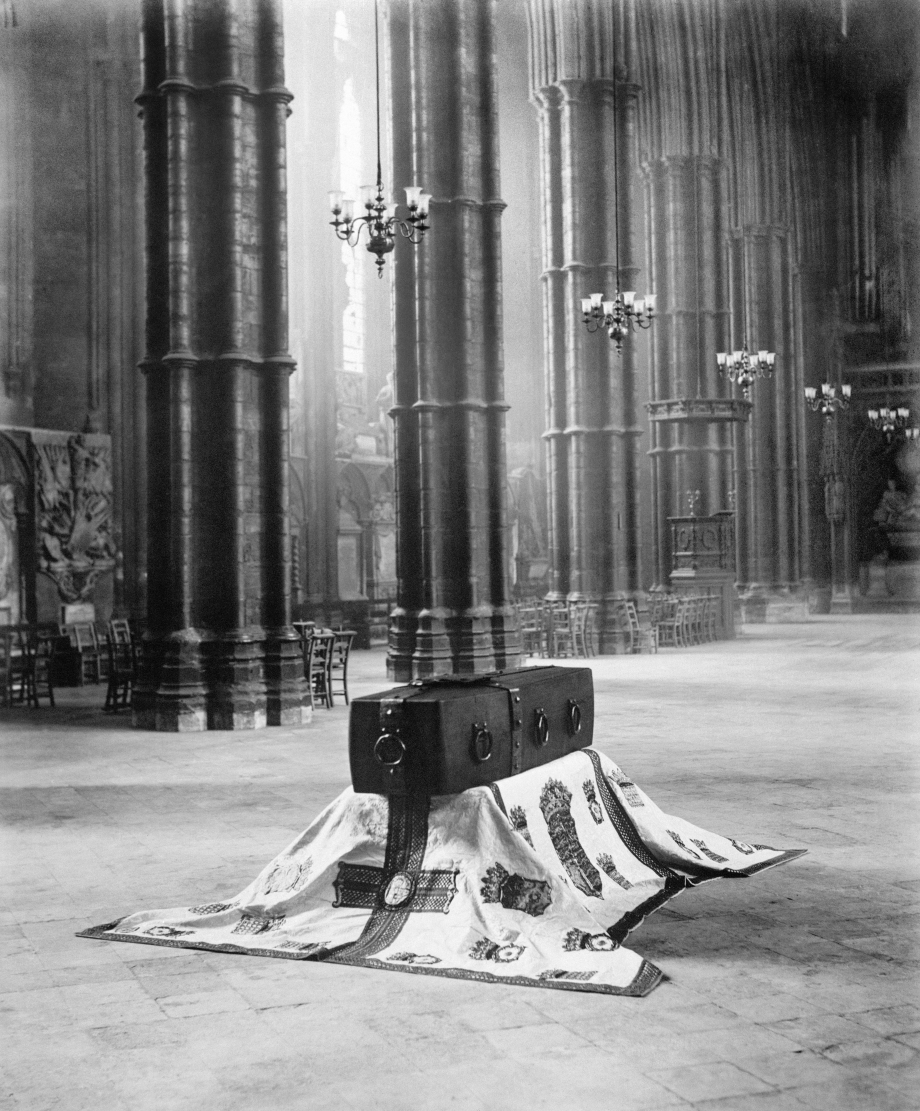
It was decided that the unveiling of the Cenotaph would be part of the funeral of the Unknown Warrior. When the funeral procession reached Whitehall, King George V laid a wreath atop the Unknown Warrior's coffin before proceeding to unveil the Cenotaph.
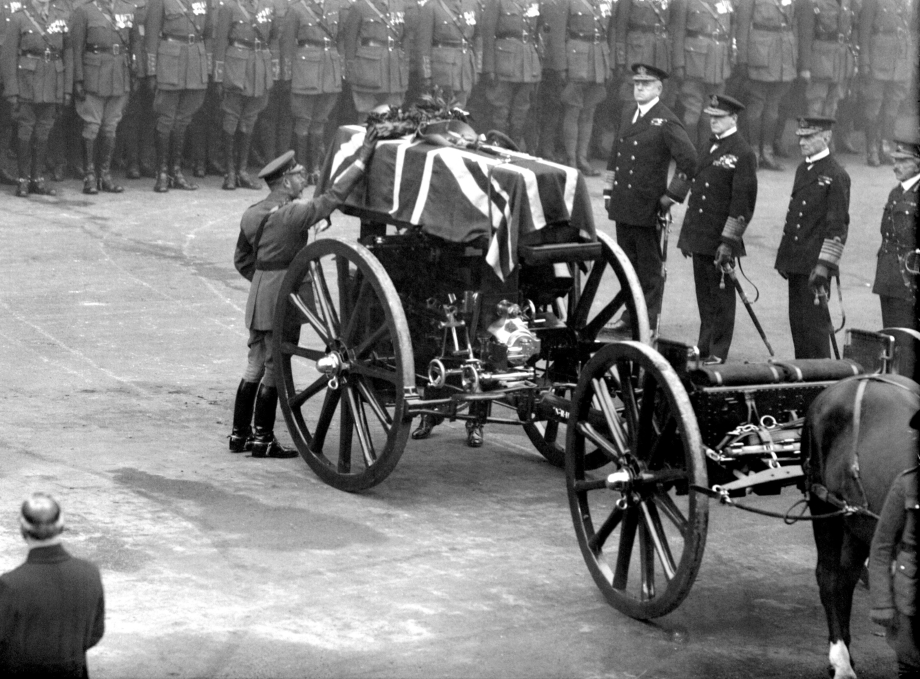
I with the three boys received the body at the Cenotaph, which had been brought from France yesterday; the funeral procession came from Victoria station. At 11.0. I unveiled the Cenotaph & then followed two minutes silence throughout the whole Empire. The whole ceremony was most moving & impressive. I then followed the gun carriage on foot to Westminster Abbey where the burial took place, the grave was filled in with soil brought from France. The Service was beautiful & conducted by the Dean.
King George V Reflects on the day
Tradition of Royal Brides
During the wedding of Lady Elizabeth (The Queen Mother) and King George VI in 1923, Lady Elizabeth paused on her way down the aisle to lay her bouquet on the grave of the Unknown Warrior, in memory of her brother Fergus who was killed in 1915 at the Battle of Loos during the First World War. Lady Elizabeth became the only Royal bride to walk down the aisle without her bouquet.
Her spontaneous action of remembrance created a beautiful tradition for other Royal Brides to follow, in 1947 Queen Elizabeth II also laid down her bouquet, as did, among others, The Princess Royal, The Countess of Wessex, The Duchess of Cambridge, The Duchess of Sussex and both Princess Beatrice and Princess Eugenie of York.
The Centenary of the Cenotaph
The Cenotaph is a stone structure located in Whitehall, London and it serves as a national shrine to the memory of all lives lost in recent wars. The Structure was designed by Edwin Lutyens and was built from Portland stone between 1919 and 1920, replacing Lutyens' earlier wood-and-plaste cenotaph in the same location. The permanent structure was finished in time for the Armistice Day parade of 1920, which was attended by King George V, along with Lutyens, the Prime Minister and the Archbishop of Canterbury.
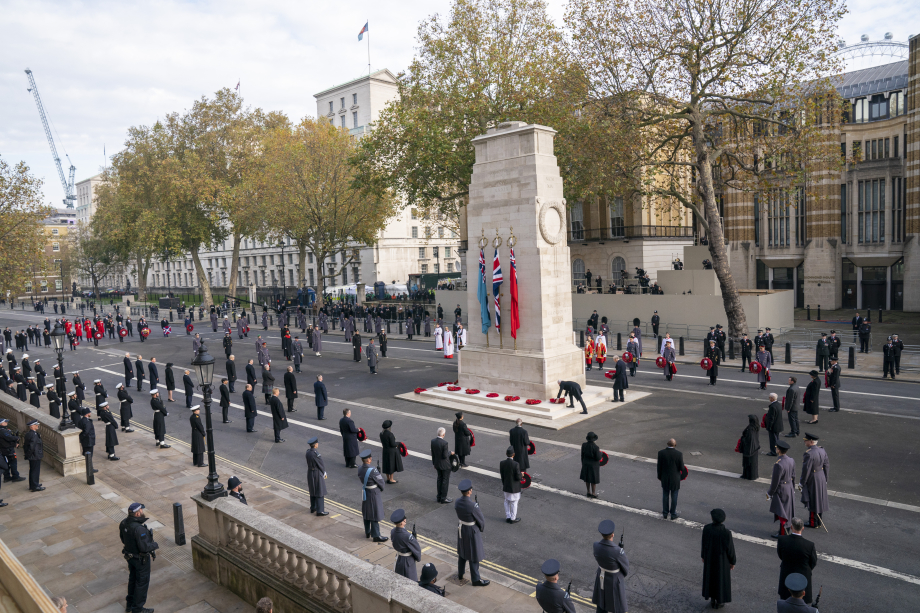
[quote author="The Times described the unveiling on 11 November 1920"]The first thundering strokes of Big Ben boomed out, louder it seemed than ever one heard it in the stillness of dawn. The King turned to face the Cenotaph and by the touch of a button, released the flags… They fell away, and it stood, clear and wonderful in its naked beauty. Big Ben ceased, and the
very pulse of time stood still.[/quote]
The word ‘Cenotaph’ derives from the Greek word for an empty tomb. In Ancient Greece, it was commonplace to build a Cenotaph when it was impossible to recover a body after battle, as they
placed great cultural importance on the proper burial of their dead.
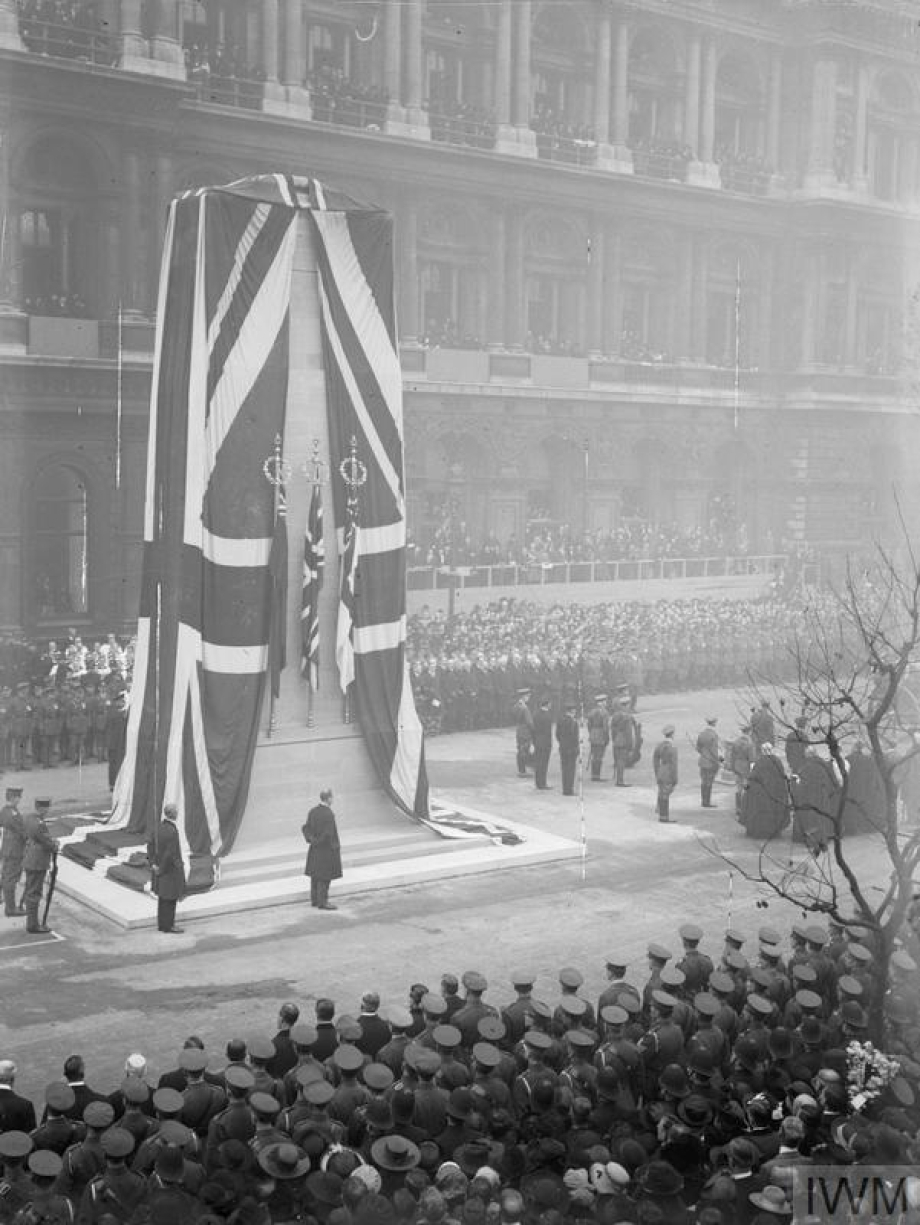
During the First World War, the vast majority of the dead lay overseas due to an official policy that forbade the repatriation of bodies. The Nation found itself needing a way to honour the absent dead, therefore when first erected; the Cenotaph immediately caught the public imagination. This substitute for a grave became the central mourning site for the masses; over 1.25 million came to pay their respects in the first week.
Similar in symbolism to the Unknown Soldier, the Cenotaph created a tangible place of remembrance for those without a known grave, as there are no names inscribed on the Cenotaph. This detail allowed people to assign their own significance to the memorial.

